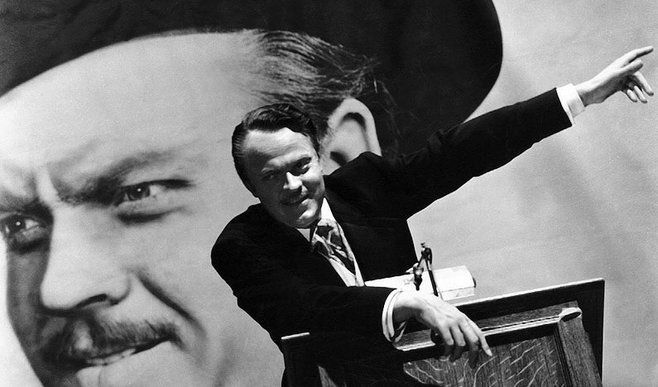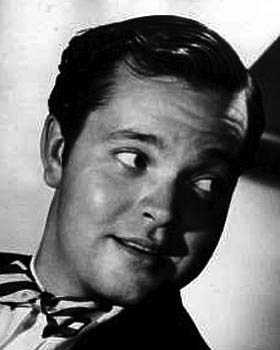My stint at this year's edition of the
International Film Festival of Kerala happened to be shorter than
last year's, lasting hardly two days. So, I could watch no
more than five films, and none of them were in the competition
section. Nevertheless I am going to chart down what I thought of the
films I saw below, since I don't want to keep my readers waiting for
my next entry (what pomposity!).
At least, I was lucky enough to watch ATouch of Sin, one of the year's
most acclaimed films by the Chinese Jia Zhang-ke. Far from the rosy
portrayal of contemporary China that we are used to hearing in the media, the film is built together out of four separate stories,
none of which have separate titles or common characters but a common
theme: helpless individuals caught in an increasingly corrupt,
materialist and profit-driven world, driven to commit acts of
violence, against others and oneself. The pace of the film is, for
the large part, contemplative in tempo, with sudden outbursts of
violence. Cinematographer Pawel Edelman captures the Chinese
landscape in all its serenity, starkly contrasting it with the bleak lives of the
characters in the four stories.
Later,
I caught up with Claire Denis' 2001 film Trouble Every Day,
a multilingual erotic horror film that is centred on two parallel
stories, one of an American couple and the other of a French couple,
both in Paris. While the American husband is impotent, the French
wife's sexual appetite is so insatiable that she engages in sexual
encounters with various men, and ends up drinking their very
blood. That is all the plot there is to this film.
In what seems to
me to be a surreal exploration of the discrepancies between male and
female sexuality, Trouble Every Day has
more than its fair share of gore, including an extended lovemaking
scene that ends in cannibalism.
The Mozambican film Virgin Margarida by Licinio Azevedo charts the experiences of sex workers in guerrilla camps in post-colonial Mozambique in the 1970s, into which a teenager Margarida (Iva Mugalela), mistaken for one them, is forcibly deported. Under the leadership of a woman guerrilla who is single-minded in her devotion to 'cleanse' them of their colonial mindset and make 'new women' out of them, the women, along with Margarida, undergo harsh training sessions with harsh punishments for dissenters.

While director Azevedo definitely has got his heart in the right place in wanting to show how the revolution could bring about little change in the lives of ordinary citizens of the country and his script mixes irony and drama with relative ease, his performers, however, are unimpressive, chiefly because they fail to make the transition from the comic to the dramatic in their performance. But there is no denying that the film feels quite like one of our day and time, not of a distant period.
Perhaps the best film I got to see at this festival was The Crucified Lovers (1954), one of Kenji Mizoguchi's late masterpieces, in a 35mm print that had good contrast, despite the infrequent scratches. I had never seen Mizoguchi on the big screen, so I did not let go of the opportunity. As always, his indictment of Japanese patriarchy and hypocrisy is at his scathing best in this tale of a samurai's wife who is accused of adultery with one of her manservants, while her husband himself has a sexual interest in her maid.
Like his other masterpieces, The Crucified Lovers is testimony to Mizoguchi's genius as a visual stylist, especially in his trademark long takes, letting the action unfold in distanced views using a moving camera. Watching it on the big screen, I was once again convinced that he is, no doubt, one of the great masters of world cinema.
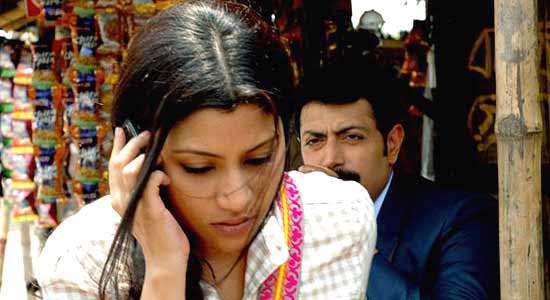
My last film at the festival, Act Zero by Gautam Ghose was the only Indian film I could see on this trip, one that tries to encapsulate in two hours and ten acts the various issues that haunt the country. While the basic premise is that of the CEO of a Multinational trying to invade the lands of tribals by deporting them and mining the area for bauxite, resulting in tensions between the tribal community and the CEO, the director crams in issues like Maoist insurgency, communalism, and throws in a fictional Binayak Sen. The result is an ineptly shot, preachy and didactic film, but one that is nevertheless watchable, thanks largely to the performances of Konkona Sen Sharma and Soumitra Chatterjee.
Thus ended my all-too-brief stay at the festival. There were several other films which I would want to have seen, especially the Jean Renoir retrospective, which screened such titles as Toni and La Bete Humaine, and a special section on German Expressionist cinema, which included such 20s classics as The Cabinet of Dr.Caligari and A Throw of Dice, which is set in India. But there's always another chance.
Written and directed by Aki Kaurismaki
Cinematography Timo Salminen
Starring Andre Wilms, Kati Outinen, Jean Pere Daroussin, Blondin Miguel and Pierre Etaix
It is not very often that a film labelled "art house" features a happy ending and gets away with it. But (Spoiler Alert!) Aki Kaurismaki attempts exactly that in this comic drama set in the French coastal town from which the film derives its title. And the way the film has been received at major festivals, it could very well seem that the director's courage has paid off.
Centred on an aging shoeshiner Marcel Marx (Andre Wilms) and his efforts to protect and rescue a young African stowaway Idrissa (Blondin Miguel) by dispatching him off to his mother in London, Le Havre could, in lesser hands, turn into an escape thriller in the Hollywood tradition. But Kaurismaki has the entire action played in deadpan, infusing the film with a sense of detachment that only adds to its charm. Yet the film does not fail in winning our empathy for Marcel, Idrissa and Marcel's ailing wife Arletty (Kati Outinen) hospitalised early on in the film with an illness for which the doctor (Pierre Etaix) says there is little hope.
Marcel's efforts at sending Idrissa to London puts him at odds with inspector Monet (Jean Pere Daroussin), whose efforts he must evade to accomplish the task he has set out for. An even greater challenge is raising the money for the journey. But Marcel is determined in his resolve to help the boy.
The thing that is striking about Le Havre is its imagery. In both the photography and the mise-en-scene, Kaurismaki's style is deliberately old-fashioned. Not only is the staging resourcefully simple, with minimal camera movement, but the film, so it seems to me, has completely stayed clear of any digital manipulation, completely keeping its faith in the photo-chemical process. That takes some courage, especially these days.
Watching the film, one is initially confused as to the period in which it is set. While the initial scenes, with Rock 'n Roll music in the background may have you believe that the film is set somewhere in the 70s, a reference to the Al-Qaeda would confirm that the film is set somewhere in the post 9/11 world. Though the film does not make any explicit political statement, it is hard to miss the political undercurrent that runs through it.
Le Havre, in that sense, is Kaurismaki's way of keeping faith in humanity even in our deeply cynical times, that there is room for compassion even in turbulent times. To condense the review in a nutshell, Le Havre brings together the humanism and politics of Chaplin and the deadpan humour of Keaton.
Written and Directed by Satyajit Ray
Based on the novel "Pather Panchali" by Bibhutibhushan Banerjee
Cinematography Subrata Mitra
Starring Kanu Banerjee, Karuna Banerjee, Subir Banerjee, Uma Dasgupta and Chunibala Devi
I first saw Pather Panchali at a film society screening, when I was still in college and had little exposure to what cinephiles term "world cinema". My first experience of the film left me confused, to be frank. While the film's beautiful images and music no doubt caught me unawares, I was definitely in the dark as to what the film was coming to say.
I definitely understood that the film was centered on a poor Brahmin family living under grinding poverty in rural Bengal, but all I could see was a series of incidents centered around them, with hardly a plot, and it moved at an excruciatingly slow pace. Where lay the greatness of Pather Panchali? Does it lie hidden in some obscure symbolism, or is the film and its adherents merely being pretentious?
Over the years since then, I happened to see the film close to 10 times in its entirety, and went through every possible literature on the film that I could lay my hands on. Slowly, the film grew on me and I began to realise that the film had no hidden meaning, that everything the director wanted to convey is all there for you to see and hear. Even the novel on which the film is based- and which I haven't read -seemed to contend itself simply with acquainting the reader with the rhythm of life in rural India, it is said.
Soon, I learnt that a story need not always have a plot as in conventional dramaturgy, that it could take the form of poetry as well, by emphasising mood, atmosphere and character psychology instead of plot points. Taken that into view, Pather Panchali does qualify as a masterful piece of filmmaking.
If I failed to "get" the film, as many members of the audience felt during that first screening, it had to do with conventional notions of what comprised "good" or "meaningful" cinema; one of the prerequisites was that you had to have a plot-driven storyline, preferably one with a "message", some hard hitting dialogues, and a style intent on realism. Barring the last of the criteria, Pather Panchali meets none of these.

While the film has often been brushed aside as dry staple for intellectuals to feed on, Pather Panchali actually is a film that needs to be savoured with both the head and heart, only that you needed a heart of a different kind. While you used your brain to admire the way Ray has transformed words on page to an audio-visual experience onscreen, you needed a heart to take delight in such sequences as the one in which young Durga and Apu follow a sweetmeat seller, their astonishment at catching their first glimpse of a moving train, the way villagers react to a band's rendition of Tipperary, and the moments depicting the onset of the monsoon.
While Satyajit Ray's debut feature enjoyed tremendous critical and commercial success around the world, playing in over 20 festivals, it was not without its share of detractors, many of whose claims seem downright ludicrous. While the film received a lot of flak back home (with former Indian actress and Member of Parliament Nargis Dutt leading the tirade) for not showing India as a prosperous country rife with beautiful men and women singing and dancing their way through life, the western world was fairly appalled with its depiction of poverty, and a leading critic for the New York Times lampooned the film's loose structure in his review, saying the film would hardly have passed for a "rough cut" in Hollywood.

Ray, however, was humble enough to acknowledge the last of these claims, for the opening scenes of Pather Panchali are not very promising. Since every member of the crew were amateurs, the film, shot in sequence, bore the marks of a novice in its opening sequences. You felt instinctively that the camera positions were inadequate in some shots, that there was no clear spatial orientation, and cuts were often made at the wrong moments. But as the film progressed, you could clearly sense that this the work of an artist who has a grasp on the aesthetics of the film medium.
While Pather Panchali is by no means Ray's best work, it is definitely the film for which he is most remembered, for the impact it created in international film circles and for the fact that it heralded the arrival of a great master in the scene, the availability of whose films are increasingly becoming unavailable in the country of his birth except in badly damaged prints and DVD transfers.
Directed by Jean Renoir
Written by Jean Renoir and Charles Spaak
Starring Jean Gabin, Marcel Dalio, Pierre Fresnay and Erich von Stroheim
With Grand Illusion (La Grande Illusion in French), the international film scene had taken notice of a hitherto unknown film-making talent- Jean Renoir, son of the famous impressionist painter Pierre-August Renoir. Renoir had been making silent movies from the 1920s and tasted success in the early 30s. With Grand Illusion, he became an international celebrity and the film was a popular success worldwide. Released in 1937, two years before the outbreak of WWII, the film's anti-war stance made it all the more significant.
But Grand Illusion is not set in the trenches. The film begins with the French Lieutenant Marechal (Jean Gabin) who, along with Captain de Boeldieu (Pierre Fresnay) are captured by the German forces in an air raid during World War One and shuttled between prisoner-of-war camps in between their efforts to escape. In between this cat-and-mouse game, we come across a range of characters like the Jewish merchant Rosenthal (Marcel Dalio) and the German aristocrat Rauffenstein (Erich von Stroheim), bonds are formed across religious and national borders, and hope is revived in the human spirit.
While the term "war film" generally brings to mind a film with loads of violence, action-packed sequences and a somber ambience, Renoir's war film replaces them with warm humour and compassion, that most essential of human qualities.
Two decades before Grand Illusion, Chaplin's Shoulder Arms (1918) dealt with life in the trenches during WWI, where he discarded his usual sentimental approach to present us with a darkly comic view of the war. But Renoir, having been in the war himself, knew all too well that humanity could exist even in the direst of situations, even across hostile countries, races and religions. This is exemplified in the close friendship that develops between Boeldieu and Rauffenstein, Marechal and Rosenthal, and in the way the escaped prisoners are tended to by a German widow.
Accustomed as we are to reports of prisoners undergoing brutal torture in war camps, the treatment of prisoners-of-war in Grand Illusion does strike us as something new. Not only are they treated more like human beings, you also get to see soldiers having a nice time off the battlefield. Whether this was a luxury offered only the "whites", I'm not sure of.
All that aside, Grand Illusion is one of those films that has everything going for it; a well-knit script with deft characterisation, a magnificent ensemble cast, beautiful background score and Jean Renoir, what more could you ask for?
One of the aspects of the film that remains striking today but was overlooked at the time is Renoir's mise-en-scene. In the first decade of the sound film, when cameras equipped for sync-sound recording were fairly bulky, and without the luxury of shooting in studios, Renoir manages to accomplish complex camera movements which, with their fluidity, remain baffling. But at a time when Soviet montage was hailed as the pinnacle of the art of cinema, the long takes of Renoir, Mizoguchi and Ophuls was underestimated. It was not until Citizen Kane and Andre Bazin's ruminations that the long take came into vogue.
I've seen very few of Renoir's work, but of the ones I've seen, Grand Illusion takes him closest to his idol Chaplin, in its seamless interweaving of humour and pathos, and in the faith it retains in the human spirit.
Written and Directed by Charles Chaplin
Music by Charles Chaplin
Cinematography Roland Totheroh
Starring Charles Chaplin and Paulette Goddard
Charlie Chaplin's depression-era masterpiece Modern Times was to represent a significant change in the icon's body of work from this point on. Not only was it his last silent picture (not entirely silent, though, for reasons which we will come to later) and the last vehicle for his character of the Tramp (though a variation of the character could be seen in The Great Dictator), but every subsequent film of his- with the possible exception of Limelight -would have overt political backdrops.

With his overnight rise to international stardom in the late 1910s and subsequent entry into artistic and political circles, Chaplin began to become increasingly politically aware, and it was inevitable that his "political awakening" would be reflected in his work. His interest in world events led the actor-filmmaker to seek meetings with Mahatma Gandhi and Winston Churchill among many others. Gandhi and his views on industrialisation especially seemed to have made a strong impression on him. But it was not simply the perils of industrialised labour that the film would come to address. The devastation caused by the Great Depression of the 30s, which he witnessed on his trip and back in America, would also find their way into the film.
Despite its grim premise, Modern Times is actually a light-hearted take on the social realities of the time. While general reviews of the time could see nothing beyond the humour, other critics were miffed with the film's refusal to talk when the world was held in sway by talking pictures, its eschewing of plot, and its simple visual style, which seemed dated to many. More highbrow critics disdained its political ambiguity.
There is no doubt that the film does veer in tone- the futuristic vision in the initial factory sequences giving way to a more contemporary milieu in the rest of the film, Modern Times is rather uneven in tone. But the brilliance of these sequences more than compensates for this minor flaw.
The opening montage- A shot of a herd of sheep dissolving into one of factory workers and a shot of a large factory, is very evident of Chaplin's political leanings. What follows is a series of sketches that begin with the Tramp tightening nuts in a factory that manufactures God-knows-what, until he himself goes nuts over the increasing demands thrust upon him and other workers. Joined by a gamine (Paulette Goddard, his third wife), they fight it out against a world that is becoming increasingly mechanised and profit-driven, to assert their individuality. While they find little success, they are determined to keep fighting.
As with most of Chaplin's work, the things that stick to your mind are the set-pieces- the Tramp being used as guinea pig on a feeding machine that feeds the workers while at work so that the lunch hour could be eliminated, the home that the Tramp and Gamine dream up for themselves, the ballet on roller skates, the Tramp's routines as waiter and so on. While most of the gags aren't fresh in themselves (He does refine some of his old routines from the shorts made for Mutual two decades earlier), he improves upon them, incorporating his own physical dexterity and improved sense of timing, that they blend seamlessly into the narrative.
The characterisation in Modern Times is worth a mention. Apart from the tramp and the gamine, very few characters have any significant screen time. Even the credits mention only two characters, that of the Tramp and the Gamine, the others simply mentioned as supporting players. Their significance is reduced to that of any other prop, simply entering and leaving after their role in the story is finished. Could this be a hint that the world is increasingly peopled by automatons?

While the opening montage was enough to brand Chaplin as a leftist in an America that treats any leftwing tendency with utmost derision, another sequence that makes a more explicit reference to communist paranoia in the States would forever brand him as a Red in the eyes of Americans. This, perhaps one of the most brilliantly executed set pieces in the film, shows Charlie picking up a red flag dropped from a truck and walking towards it, only to be nabbed by the police who suspect him to be a communist leader. Using no words, and in no more than five shots, Chaplin succeeds in driving home the message. Watching this sequence, one wonders what the pundits who brushed aside Chaplin as "uncinematic", were actually thinking of.
Another remarkable facet of the film is its sophisticated use of sound. True, Chaplin was averse to talk, but he was not averse to the possibilities that sound offered the filmmaker. In his previous release, City Lights, he took the plunge into the sound film by composing a score and adding a few sound effects. But he took his experiments even further here. The only "sounds" you hear in Modern Times are the sounds of machines, of objects. The human voice is otherwise silenced, heard only through a machine like a television screen, radio, or a record. The only person who finds his voice in the film is the Tramp, who breaks into song towards the end, but which is of no particular language, for he is bereft of linguistic barriers. One particular sequence, involving the Tramp and a woman having a cup of tea, is particularly notable, anticipating the work of Jacques Tati.
Modern Times would find more acceptance in the post-WW2 era, and its influence could be seen in works like George Orwell's 1984, with its Big Brother and telescreen clearly reminding us of Chaplin's film. While the film could be considered Chaplin's most formally inventive work, it endures because of the way it resonates with our own times.
Directed by Vittorio De Sica
Written By Cesare Zavattini
Cinematography Carlo Montuori
Edited by Eraldo Da Roma
Music by Alessandro Ciccognini
Starring Lamberto Maggiorani and Enzo Staiola
Bicycle Thieves has become so iconic a film that it its reputation soars far higher than any other film made during what generally is called the "Italian Neo-realist" film movement. The neo-realist movement, which lasted roughly from the mid 40s to the early 50s, was a direct response to the devastation caused by World War II in Italy. The movement, which roughly began with Rossellini's Rome, Open City, is generally considered to have reached its artistic zenith with De Sica's 1948 masterpiece.
While umpteen films were made under the tag "neo-realist", only a handful of films have the worldwide acclaim as of now, and of the few that have, De Sica's film remains the most cherished by audiences. One could attribute this to the film's universality. While Rossellini's war trilogy was essentially Euro-centric, Bicycle Thieves, with its searingly simple premise of a man in search of his lost bicycle, made for a theme which anyone anywhere could relate to.
Like most art movements, what made neo-realism a landmark movement in the history of cinema was the distinctive aesthetic it introduced. No longer able to afford shooting within the confines of a studio or with bankable stars, filmmakers had to take their cameras out into the streets, filming with whatever light was available, and by using non-professional actors without make-up. As a result, cinema finally seemed to be shorn of all artifice, and viewers were confronted with bare reality presented to them, without the interference of any manipulation by the studio system.
There were films before the emergence of neo-realism that challenged conventional methods of filmmaking, like the Expressionist cinema of 1920s Germany, the Impressionist cinema in France of around the same period, and the Surrealist movement, but they occasionally used professional actors and studios. Films that veer close to the neo-realist aesthetic of that period would be Flaherty's Nanook of the North, which was shot on location without using professional actors, and Renoir's Toni in the 30s, which would similarly make use of non-actors. But these were individual efforts, and it hadn't yet been proved to the world that an entire cinema industry could make films that way. That would happen only after 1945. Films like Rossellini's War Trilogy and Bicycle Thieves proved that you could make a great film with only a camera and an inquisitive mind.

Yet it would be unfair to credit Bicycle Thieves as the product of one mind. For one, its plot was based loosely on a novella of the same name by Luigi Bartolini, which was turned into a screenplay by Cesare Zavattini, who wrote a great number of films during that period. Later, he would often fume at the fact that credit for the film's greatness went entirely to De Sica, and went so far as to claim that 90 percent of the film was his own creation. While you could credit the writer with his brilliant social observation in the film, since Zavattini himself claimed that he no involvement in the production, you could not overlook De Sica's contribution to the final work, especially in his mise-en-scene and the way he has evoked brilliant performances from a largely unknown cast of non-professional actors.
In its spare use of camera movements, montage and largely medium to long-shot framing, Bicycle Thieves has a stylistic austerity that is reminiscent of a Chaplin film. Even in its worldview, that of a dog-eat-dog world, it is not unlike the themes that pervade Chaplin's work. But it avoids the poetry, gracefulness, and the optimism of the Tramp, to present a more harsher, more fatalistic view of the world.
Upon release and international acclaim, Bicycle Thieves influenced several filmmaking countries of the time, notably in India, which had just emerged from colonial rule. The immediate influence of the film could be seen in films like Bimal Roy's Do Bigha Zamin and Raj Kapoor's Boot Polish, while a hitherto unknown Satyajit Ray borrowed the neo-realist aesthetic to scale poetic heights in his debut feature Pather Panchali.
Come May 3, 2013 and India's film industry will be celebrating the hundredth year of its birth, for it was on this day exactly a hundred years ago that Raja Harishchandra, supposedly the first Indian film made by the first Indian filmmaker Dadasaheb Phalke, hit theatre screens. In a country known for its lackluster approach to film preservation (bar the efforts of PK Nair, founder of the National Film Archive of India, on whom a documentary, Celluloid Man was recently made, which I have written about here), the fact that we have got the date on which the film was released right is indeed remarkable. But is Raja Harishchandra really India's first film?
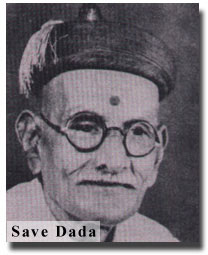
A little more probing would reveal that there have been films made in the country before Phalke's feature debut. Shortly after the Lumiere brothers screened their "actualities" in Bombay (As Mumbai was officially called then) in the late 1890s, a certain Harishchandra Sakharam Bhatwadekar, or Save Dada, a portrait photographer, made a series of factual films a la the Lumiere Brothers in India, the first of which was a wrestling match between two well known wrestlers of the time, in 1899. He even filmed perhaps India's first newsreel, the arrival of RP Paranjpe, a successful mathematician, from Cambridge in 1901.
In fact, the non-fiction cinema seemed to have been active in India well before Phalke made his entry. By the first decade of the 20th century, cinemas were already established in major cities of the country like Calcutta, Madras and Bombay (though it could be assumed that these theatres screened largely foreign films, like those of George Melies and Edwin Porter). Very soon, Bhatwadekar was joined by other names like Narayan G Devare, the Patnakar brothers and Hiralal Sen, who made factual films that documented day-to-day life in India. A company dedicated to filming newsreels, the Calcutta Film Gazette, was also started during this period.
Despite these facts, the credit for making the first Indian film has always gone to Dundiraj Govind Phalke, partly because none of the films before Raja Harishchandra have survived and also because of the fact that the documentary, or non-fiction film has never been taken seriously in India. But such a claim would be tantamount to assuming that the father of film would be George Melies and not the Lumiere Brothers or Edison.
What makes this celebration even more interesting is the fact that most histories of Indian cinema do recognise the earlier pioneers but since Harishchandra was the first full length motion picture made entirely by an Indian crew, at a full six reels (of which only two have survived) the film and its maker have been accorded first Indian film and first Indian filmmaker respectively. Nowhere do you find a voice that challenges this assumption.
Well, yes, there has been a challenge to this assumption, but of a wholly different kind. The argument that generally goes around is that it is not with Phalke's Harishchandra, but with Satyajit Ray's Pather Panchali that Indian cinema really begins. Mrinal Sen has been the most vocal about this stance. Though there is no doubting the greatness of Pather Panchali and the fact that it paved the path for a more personal cinema in India, such a claim only amounts to elitism. Yet it could generally be accepted that few filmmakers in India before Ray approached cinema in a wholly original way without the trappings of the theatre or literature. But it does not call for overlooking the achievements of the earlier filmmakers.
So will this piece initiate any debates on the real beginnings of Indian cinema? Very unlikely. Meanwhile, the celebration of our cinema's hundredth anniversary will be celebrated with full pomp and the glorious "achievements" of mostly Bollywood cinema will be glorified as part of the celebrations.
Directed by Ben Affleck
Written by Chris Terio
Starring Ben Affleck, Bryan Cranston, John Goodman, Alan Arkin
The moment I heard about the movie and its plot, I had a slight suspicion about what I thought the movie would be about. When the film won the Oscar for the best motion picture (announced by the first lady Michelle Obama at that), my suspicions were almost confirmed, and when I caught the movie at a local theater, I was convinced not only that I was right, but also the Academy of Motion Picture Arts and Sciences recognises films that seek to establish the political superiority of the USA, or "whites" in general.
How else would you describe an Oscar winning film that is so conventional that it is hardly distinguishable from a normal Hollywood release? Every dramatic device in the film has been incorporated at the most predictable moments, and there is hardly any mark of individuality to been in the movie, which can be seen from its visual and sound design. The tight camerawork, rapid cutting combined with the occasional one-liner makes for a tedious movie experience.
The film actually is inspired by true events, when the American embassy in Tehran was boycotted by Iranian revolutionaries during the Iranian hostage crisis of the late 1970s, and around 50 Americans were taken hostage, of which six escape into the Canadian Embassy. To rescue the six Americans, CIA exfiltration specialist Tony Mendez (Affleck) hatches up a plot where he travels to Iran as producer of a fake movie "Argo" to scout locations for the film. He travels to the country not only with false documents about a movie that is never going to be made but also with false identities for the six Americans who are currently in hiding.
The propaganda in the film is so blatant in its portrayal of Iranians as people driven wild by fanaticism, who try to resist violently the "sophistication" that America has to bring to them (as if the lynching of blacks in their own country were not driven by fanaticism). So as to prove that its claims are true, documentary footage of the time is interspersed in between the film.
Like Danny Boyle's Slumdog Millionaire, another Oscar winner from 2008 (for the same reasons), Argo is essentially about proving why the third world deserves to be the third world and why the whites will always be superior. By giving it the best film prize, the Academy recognised it not for its artistic merit but for reinforcing the idea that the USA would remain leader of the world.
Written and Directed by G Aravindan
Cinematography Sunny Joseph
Editing KR Bose
Music Salil Choudhary
Starring Mohanlal, Neena Gupta, Neelanjan Mitra, Shobhana, Padmini
Vasthuhara or The Dispossessed, Aravindan's final film, takes up a theme that is of historical significance. But instead of treating it in its broader context, Aravindan pares it down to the personal, which in turn reflects the larger society around it. Aravindan's cinematic swansong is a portrait of a people who have been deprived not only of their land and wealth, but their very identities, making them refugees in their very own land.
The film opens with newsreel footage of scores of people migrating from East to West Bengal during the post-independence partition, as a voiceover describes the suffering the migrants are put through. From there, we cut to 1971 in Calcutta and are introduced to Venu (Mohanlal), a Malayalee officer at the Rehabilitation Ministry who is involved in relocating refugees based in Calcutta to the Andaman islands.
One day he is approached by Arathi (Neelanjan Mitra), a middle-aged Bengali woman who requests him to deport her to the islands so that she and her two grown-up children can escape from their impoverished lives in Calcutta. The woman comes across Venu as being familiar, be he is unable to figure out how. Further probing reveals disturbing truths about Arathi's connection with Venu's family, and her daughter Damayanti's (Neena Gupta) dislike for Malayalees. We do not see much of her son, except in the scene when Damayanthi takes her to him, who is under hiding due to his involvement in the Naxalite movement.
Aravindan being a high-brow intellectual himself, is apparently disdainful of the pretensions of the Malayalee, as is evident in the scene where a group of Malayalees in Calcutta discuss the greats of Bengal literature surrounded by food and drinks but are apparently oblivious to the harsh reality that surrounds them. Often, the greed of the upper classes in Kerala when it comes to property is highlighted in this film rather explicitly, which is unusual for an Aravindan film.
Based on a novel of the same name by CV Sreeraman, The Dispossessed is deeply humane in its regard for the woes of the expatriates, though Aravindan is never vocal about his empathy. He prefers to give us small visual cues from which we have to relate to the whole.
Like in his other work, The Dispossessed takes on a loose narrative structure, taking occasional detours by focusing on the faces of refugees as they are being transported to the islands, intercut with images of a Durga Puja, one of the most important festivals in Bengal, and the immersion of the Durga idol in the Ganges. The film ends with the refugees being transported in a ship, followed by newsreel footage of the exodus of 1971 and the India-Pakistan war that eventually culminated in the creation of Bangladesh after another round of horrible bloodshed. The downtrodden of the earth are indeed a condemned lot.
Written & Directed by Kamal
Starring Prithviraj, Mamta Mohandas, Chandni, Sreenivasan
Cinematography Venu
I have a hunch that more than telling the story about a long-forgotten pioneer in Malayalam cinema, director Kamal (not to be confused with actor-director Kamal Haasan) wanted to take his viewers through a journey to the times when films where made on film and projected through film. Though 35mm screenings have remained the norm until a few years back(I'm talking about India), the movie going public were largely ignorant of how a series of 24 still pictures flickered on the silver screen to create movement ever since they were bombarded with several video formats like the VHS, VCD, DVD and now the Blu-Ray. Nostalgic crap, you would say, but it is also evident of the attachment an artist can have with his tools.
This feeling for a fast-dying tradition is evoked throughout the movie, right from the first scene when a child burns an entire reel of film down to the last scene, where JC Daniel's last son, Harris (Prithviraj again) confesses that he had burned the only copy of Vigathakumaran (The Lost Child), the first film made in Kerala, by a Keralite. Several such glimpses abound in the movie, like in the scene where he holds out a strip of film to his wife Janette (Mamta Mohandas) and explains how the illusion of movement is created. Another moment is while he lovingly rewinds a reel of Chaplin's The Kid and briefly dwells on Chaplin's image embedded on each frame.

One of the disappointments I encountered with Paresh Mokashi's Harishchandrachi Factory, which documented the making of the first Indian film Raja Harishchandra, was that despite the better quality in the acting, the filmmaker hardly touched upon this aspect, and worse, treated silent films as an anachronism. Celluloid, on the other hand, dwells on its protagonist JC Daniel's (Prithviraj) initial fascination with the film medium and is more respectful of the early films, as seen when the local townspeople witness a screening of The Kid which is held in high regard by our protagonist. If the film is to be believed, JC Daniel had set his ambitions higher, and unlike the staple mythological films made in the country at the time, wanted to make a "social drama" that could stand on a par with Chaplin's masterpiece.
The first half of the films are laden with a lot of humour, when Mr Daniel begins shooting his film and has to handle actors who have never seen a motion picture camera before. The social context of the times is also an important sub-plot in the film, especially the despicable tradition of caste oppression, which Daniel boldly defies by roping in a lower-caste woman Rosamma (Chandni) for the role of a Nair woman in his film. This will turn out to be the nemesis for Vigathakumaran, the film whose fate turns out to be exactly that of its title.
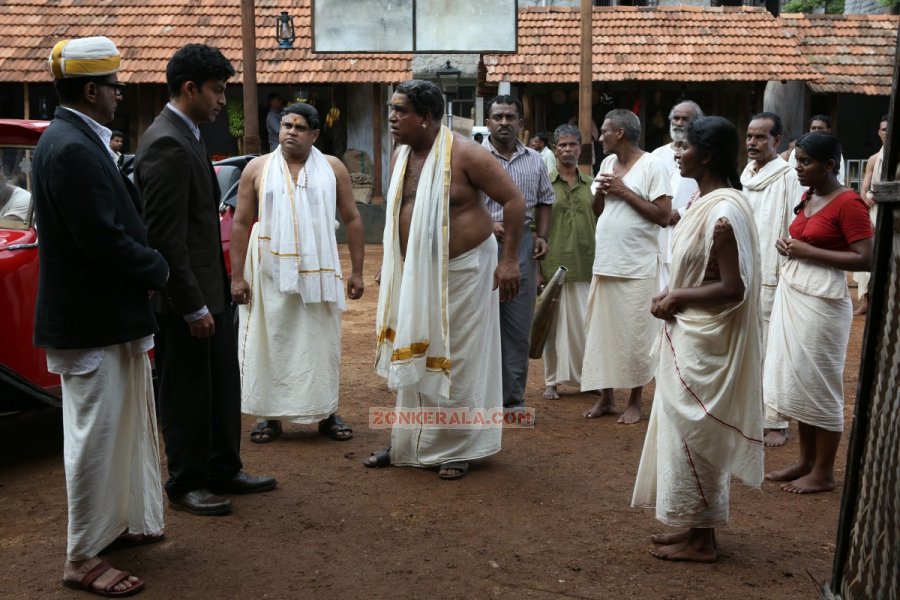
The film's second half chronicles how Chelangatt Gopalakrishnan (Sreenivasan), the writer, catches up with an aged, impoverished and forgotten Daniel and writes his biography, the only source of reference for anything related to the pioneer, and we follow his struggles as he tries to get the government to give the forgotten pioneer credit as the father of Malayalam Cinema. Though not as interesting as the first half, it still is an interesting watch, thanks to a decent script by its director Kamal.
I would, however, not call the film a masterpiece, especially not when you have Prithviraj, the lead actor, delivering an uninspired performance, which is the same of all his films. But you take it for granted that there are no other actors in the industry young enough and can get the Travancore accent right, besides the fact that you need a familiar face to bring the audience to the theatres. Equally unimpressive is Mamta Mohandas' performance, though she does better in the second half as the aged wife. This handicap of the film is given redemption by a strong supporting cast and by some impressive production design.
Despite its flaws, Celluloid is still a recommended watch since it is, to me, more original than what normally passes for as "new generation" cinema in Kerala and the downplaying of musical numbers as seen in a handful of recent releases is indicative of a sort of recovery in Malayalam cinema, which, for more than a decade, was hell bent on churning out stuff that looked like its counterparts in Tamil and Hindi.
Directed by Orson Welles
Written by Orson Welles and Herman J Manciewicz
Cinematography by Gregg Toland
Edited by Robert Wise
Music by Bernard Herrmann
Starring Orson Welles, Joseph Cotten, Agnes Moorehead, Dorothy Comingore, Everett Sloane, Ruth Warrick
A shot of a wired fence with a No Tresspassing sign on it and a castle in the distance dissolves into another shot that takes us on the other side of the fence- we have defied the warning.
The very opening shot of Orson Welles' debut feature Citizen Kane strangely evokes his own non-conformist nature. He was, in a way, signifying through the very first couple of shots that he was going to break all the rules that hitherto existed in the Hollywood tradition of filmmaking.
The film, as we all now know it, is a character sketch of Charles Foster Kane, the newspaper baron and pioneer of yellow journalism, from the perspective of a newsreel, Kane's guardian Mr Thatcher's manuscript, and testimonies provided by his associates and partners, interviewed by a journalist who wants to know what Rosebud, Kane's dying word, is all about. While neither of them has a clue, the audience finally gets to see at the end of the film what it is all about.
The story of how George Orson Welles, an amateur theatre and radio artist, grabbed a Hollywood project at age 24- a deal which most people could only dream of -is the stuff of legend. Welles had already gained fame and notoriety for staging Shakespeare's Macbeth using a team of Afro-American actors, and for his radio adaptation of HG Wells' War of the Worlds, which drove an entire city wild with panic. His approach to his first movie project was also in the same spirit of rebellion, and that is exactly what makes Citizen Kane such an enduring film.
Another fact about the film that is enshrined in legend is that the film takes several digs at William Randolf Hearst, the real-life press baron still living at the time, who made a marketable commodity out of journalism. Another side of the mogul that was extensively caricatured in the film was his relationship with his mistress, actress Marion Davies, who was portrayed as Susan Alexander, a singer in the film.
While the premise in itself had enough to give it notoriety, Welles looked for more. Another factor that gave Kane its notoriety upon its release and which is one of the reasons the film is celebrated today is its technique. The film made extensive use of fragmentary flashbacks, cunning editing (the abrupt cut from Kane's deathbed to the obituary newsreel; a 10-year-old Kane wishing Thatcher Merry Christmas to Thatcher wishing Happy New Year to a 25-year-old Kane), expressionist lighting, an unconventional soundtrack, deep focus photography and single take coverage of scenes. All this, packed into a two hour movie, seemed too much for the audience of 1941 to take in, and Citizen Kane failed at the box office.
But this notoriety turned into renown in a few years' time, thanks to the critics' championing of the film (Andre Bazin, especially, was bowled over by the film's use of deep space, so was Bosley Crowther of the New York Times), and especially by the interviews delivered by Welles and his DP Gregg Toland. That, and the relative oblivion of non-Hollywood films in the international film scene helped Kane in being reputed as the first film that made use of the effects mentioned above. It also won acclaim as being the first film that showed the ceilings of sets.

But as time has now proved, several of these innovations were already in place in other filmmaking cultures. Post-50s, the proliferation of film festivals and international film culture revealed that Mizoguchi and Ophuls were already pioneers of the long take, Renoir had perfected deep focus photography in The Rules of the Game, and Yasujiro Ozu was showing the ceilings of sets years before Kane was released. Despite these revelations, Welles' film continued to be voted as the greatest film ever made for over 50 years, until Hitchcock's Vertigo toppled it in the Sight and Sound list of 2012.
This surely does not mean that Citizen Kane is not a great film, for it truly is one of the twentieth century's great works of art that demands analysis yet defies it. While the several innovations the film is credited with was already in place in several filmmaking traditions around the world, Welles, as he himself admitted in an interview, had the advantage of total ignorance of their use by other directors and hence, made use of them in his own, original way. Besides, he had the expertise of cinematographer Gregg Toland by his side, to whom he would ever remain indebted.
Directed by Rajeev Ravi
Written by Santosh Echikkanam
Starring Fahadh Fazil, Andrea Jeremiah, Aashiq Abu
The basic premise of Annayum Rasoolum is one of the most cliched, predictable and what was once the staple fare of pan-Indian cinema through the late 80s and 90s: love at first sight, boy pursuing girl until girl agrees to fall back in love, unwilling families on both sides, girl eloping with boy, and the eventual climax. But what makes this film worth the watch is the freshness in treatment.
For one thing, the traditional song-and-dance routine is entirely done away with, the songs merely to highlight the emotional state of either of the characters. The story is set around Fort Kochi , serves as a major backdrop to the events around which the story will turn. A lot of emphasis is placed on characterisation, and each character in the film become quite believable. Dialogues are pared down to a minimum, and melodrama is also downplayed to a great extent. It is the eyes that do most of the talking, especially the eyes of our protagonists. Everything, from infatuation to search, discomfort, anticipation, acceptance, disillusionment and devastation are all communicated with the eyes.
Rajeev's skills as director are also evident in this work, in the way he stages his scenes and especially in his handling of actors. Annayum Rassolum is one of the most well-acted films in Malayalam I have seen in a long while, and every character, right down to the menacing brother of the heroine (another cliche!), are done quite convincingly. Even directors Aashiq Abu, as Rasool's brother and Renjith as their father, have played their parts convincingly.
When a film has so many virtues, one has to ignore the weak storyline. And yet, the film manages to rattle you with its ending in ways few films dealing with the same plot actually can. And have.











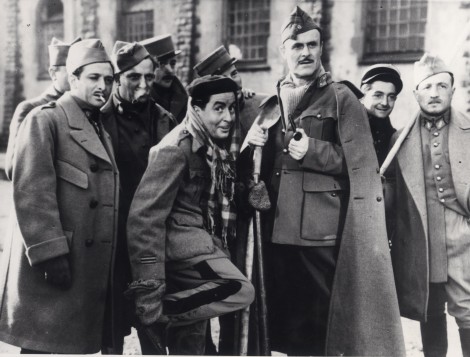

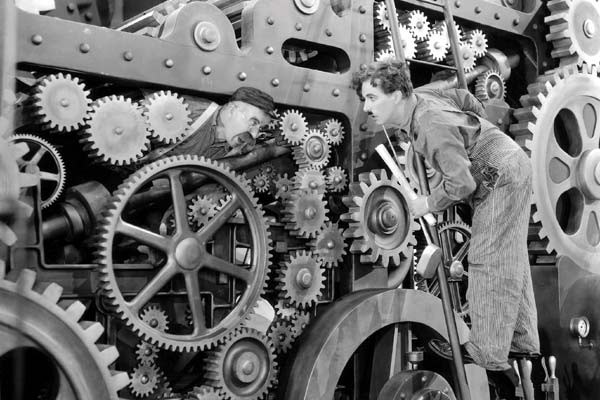

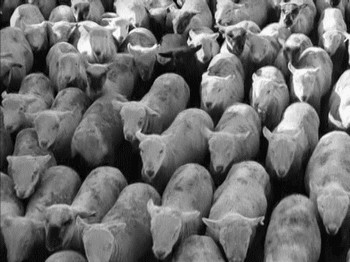


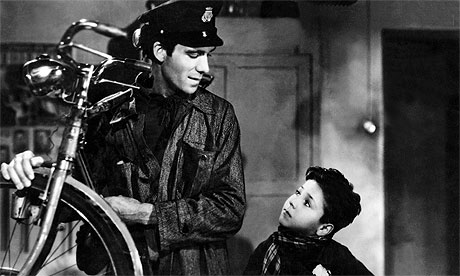

.JPG/585px-Raja_Harischandra_(1913_film).JPG)







